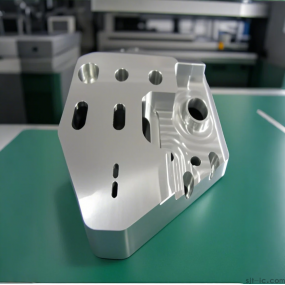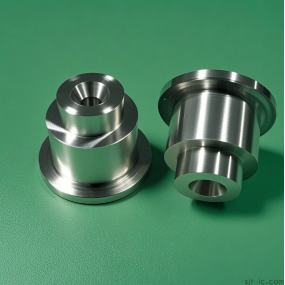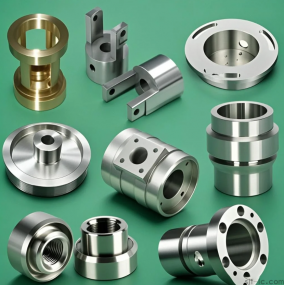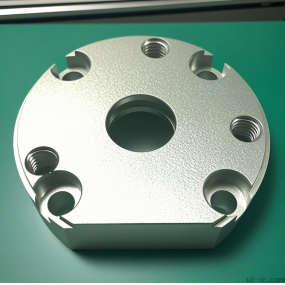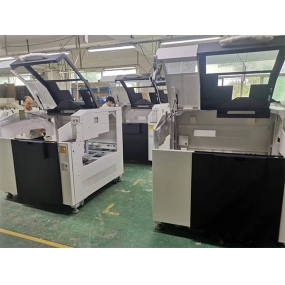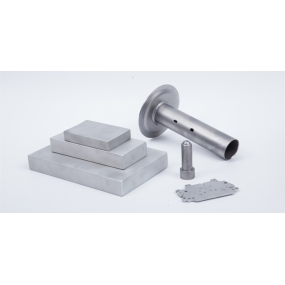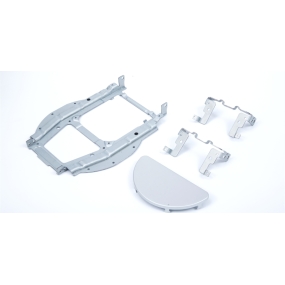CNC Machining, also known as computer numerical control machining, is a manufacturing and processing technology for parts and products under computer control. There are various ways to design fixtures for CNC machining, and the following are the main methods: 1. Directly finding the centering clamp: This is a method of directly clamping the workpiece position on the machine tool, which can be achieved by using a dial gauge, a marking plate, or visual inspection.  2. Marking and finding the centering clamp: Draw the centerline, symmetry line, and machining line of each surface to be machined on the blank according to the part drawing, and then install the workpiece on the machine tool to determine the clamping position of the workpiece. This method requires high technical skills from workers and is generally used for single piece production or situations where the size tolerance of the blank is large. 3. Using specialized fixtures: fixtures specially designed according to the requirements of the machining process, with positioning elements on them to quickly occupy the correct position of the workpiece relative to the machine tool and cutting tool. This type of fixture can ensure the positioning accuracy of the workpiece without calibration, with high production efficiency. However, it requires the design and manufacture of specialized fixtures, which are widely used in batch and large-scale production. In addition, there are some more specific fixture design methods: 1. Standardized fixtures: specialized fixtures assembled using partially or completely standardized parts that have already been standardized. When the product is changed and the fixture is no longer in use, it can be disassembled and the standard parts can be saved for future use. 2. Group fixture: a fixture designed for a group of parts with similar installation methods in a multi variety, small batch production mechanical processing workshop. By making slight adjustments or replacing certain positioning and clamping components on the fixture, it is possible to switch from processing one workpiece to processing another. 3. Combination fixture: composed of a set of standard components and fittings specially designed and manufactured for easy assembly and disassembly, with complete interchangeability and wear resistance. After using the fixture, it can be easily disassembled, cleaned, and stored for future assembly of new fixtures. In the process of fixture design, factors such as machining accuracy, production efficiency, chip removal convenience, and economy of the workpiece also need to be considered. Correctly selecting positioning benchmarks, positioning methods, and positioning components, as well as using fast clamping mechanisms and mechanized clamping devices, are all key factors in improving the effectiveness of fixture design.
2. Marking and finding the centering clamp: Draw the centerline, symmetry line, and machining line of each surface to be machined on the blank according to the part drawing, and then install the workpiece on the machine tool to determine the clamping position of the workpiece. This method requires high technical skills from workers and is generally used for single piece production or situations where the size tolerance of the blank is large. 3. Using specialized fixtures: fixtures specially designed according to the requirements of the machining process, with positioning elements on them to quickly occupy the correct position of the workpiece relative to the machine tool and cutting tool. This type of fixture can ensure the positioning accuracy of the workpiece without calibration, with high production efficiency. However, it requires the design and manufacture of specialized fixtures, which are widely used in batch and large-scale production. In addition, there are some more specific fixture design methods: 1. Standardized fixtures: specialized fixtures assembled using partially or completely standardized parts that have already been standardized. When the product is changed and the fixture is no longer in use, it can be disassembled and the standard parts can be saved for future use. 2. Group fixture: a fixture designed for a group of parts with similar installation methods in a multi variety, small batch production mechanical processing workshop. By making slight adjustments or replacing certain positioning and clamping components on the fixture, it is possible to switch from processing one workpiece to processing another. 3. Combination fixture: composed of a set of standard components and fittings specially designed and manufactured for easy assembly and disassembly, with complete interchangeability and wear resistance. After using the fixture, it can be easily disassembled, cleaned, and stored for future assembly of new fixtures. In the process of fixture design, factors such as machining accuracy, production efficiency, chip removal convenience, and economy of the workpiece also need to be considered. Correctly selecting positioning benchmarks, positioning methods, and positioning components, as well as using fast clamping mechanisms and mechanized clamping devices, are all key factors in improving the effectiveness of fixture design.
Hello! Welcome to EMAR's website!
 English
English » »
» »
 Spanish
Spanish Arabic
Arabic French
French Portuguese
Portuguese Belarusian
Belarusian Japanese
Japanese Russian
Russian Malay
Malay Icelandic
Icelandic Bulgarian
Bulgarian Azerbaijani
Azerbaijani Estonian
Estonian Irish
Irish Polish
Polish Persian
Persian Boolean
Boolean Danish
Danish German
German Filipino
Filipino Finnish
Finnish Korean
Korean Dutch
Dutch Galician
Galician Catalan
Catalan Czech
Czech Croatian
Croatian Latin
Latin Latvian
Latvian Romanian
Romanian Maltese
Maltese Macedonian
Macedonian Norwegian
Norwegian Swedish
Swedish Serbian
Serbian Slovak
Slovak Slovenian
Slovenian Swahili
Swahili Thai
Thai Turkish
Turkish Welsh
Welsh Urdu
Urdu Ukrainian
Ukrainian Greek
Greek Hungarian
Hungarian Italian
Italian Yiddish
Yiddish Indonesian
Indonesian Vietnamese
Vietnamese Haitian Creole
Haitian Creole Spanish Basque
Spanish Basque


